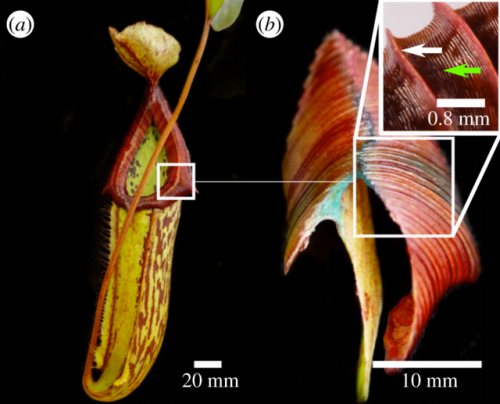Pitcher plants all use slippery rims and sticky digestive juices to capture and trap their insect prey. But two species of pitcher plant independently evolved an extra trap: a rain-activated springboard lid. Both the Seychelles pitcher plant and the slender pitcher plant — separated geographically by 6000 kilometers — have a springy, near-horizontal “lid” that sticks out over their pitcher. The underside of the surface is slippery, though less so than the pitcher’s lip and walls. Unsuspecting ants crawl under the lid, confident that they can keep their footing, and then — bang — a rain drop hits the springboard. That impact catapults the insect directly into the drink. There’s no escaping now.
How did two widely separated, independently evolving plants both settle on this technique? Scientists think it was random chance. Pitcher plants are highly variable in their pitcher size, shape, and features. The scientists suggest that by trying lots of random combinations, these two species hit upon a particular arrangement that works really well for them. (Video and image credit: Science)






